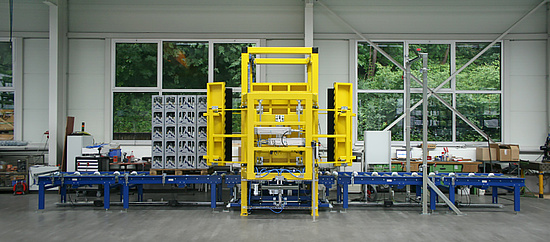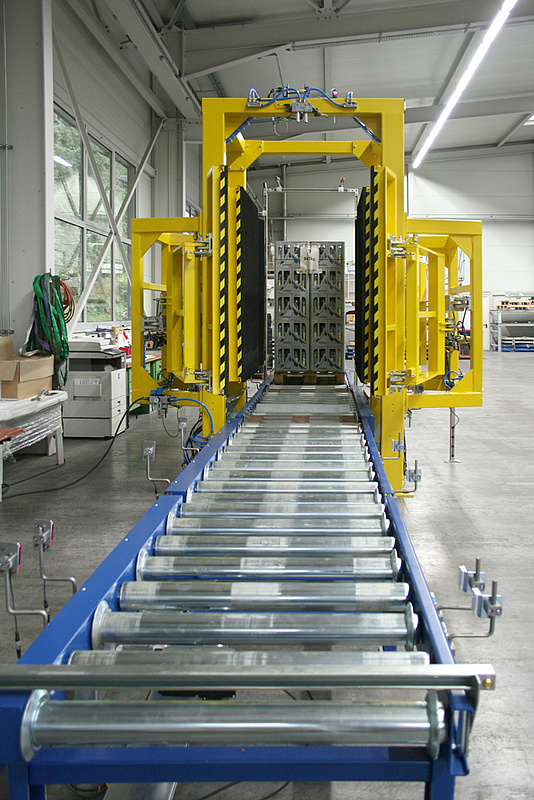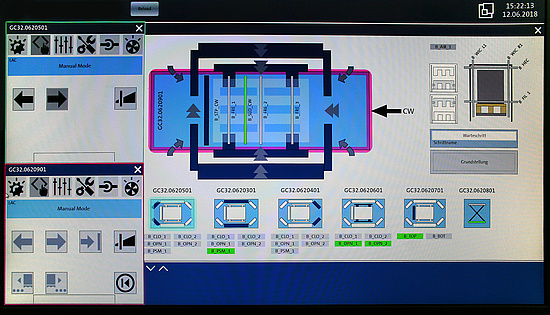Because not all broken pieces bring luck...
In combination with the existing infrastructure, BINDER also creates flexible fallback levels to secure the transport processes.
New buildings, modern systems, expanded conveyor technology: a beverage manufacturer from southern Germany is responding to constantly growing production figures with extensive new construction and modernization measures. In addition to the construction of new facilities, the comprehensive expansion concept also includes the expansion and modernization of the existing intralogistics. With BINDER GmbH, the client has brought an experienced partner on board: for more than 50 years, the company from Burgstetten near Stuttgart has been planning, developing and implementing intralogistics components and solutions for a wide range of industries.
Installation during operation
BINDER began planning in September 2017 - initially only on the basis of a verbal contract with its long-standing partner SYSTEM LOGISTICS, which is largely responsible for the project as general contractor. The first intralogistics components were delivered in July 2018 and the system was completed in summer 2019. The challenge here was that the intralogistics system was installed and the new areas were connected during ongoing operations at the plant, whose cramped topography in the mountainous landscape required detailed planning of all measures.
Glass breakage as a worst-case scenario
Incidents involving wedged or broken pallets are always annoying. In the beverage industry, however, they quickly turn into a medium to large-scale disaster: if defective pallets cause glass to break, this can contaminate entire shelves. Extensive clean-up measures and unnecessary downtime are often the result. Testing pallets is therefore common practice in the beverage industry, as around a fifth of all load carriers are replaced as “out of order” - or NIO for short - before being used in the warehouse. In the current project, the client is playing it safe by replacing all pallets with previously inspected load carriers before they are transported to the warehouse. Together with the customer, BINDER developed a reliable pallet changing station for load carrier management as a custom-made special solution. As part of the project, BINDER installed five of the changing stations in the new system.
Pallet exchange: Efficient process ensures high throughput
The way the system works is as simple as it is effective: three or six pallets are placed on the task by the forklift and separated. They then pass through a contour check before reaching the pallet changer. This lifts the crates with the glass bottles, the unchecked pallet is removed by roller conveyors and replaced by a checked load carrier. The pallet changer places the crates on these before they leave the changing station and are conveyed onwards. At the same time as this process, empty, intact boxes are fed into the material flow using the zipper process. The untested load carriers then pass through the inspection system and - depending on the result - are either reinserted or ejected. The rejects are replaced by new, purchased pallets. The system functions fully automatically and the software provides an overview of the current process sequence in the changeover system at all times via an intuitive display and clear menu structure.
Emergency systems ensure uninterrupted material flow
A special request from the customer when planning the intralogistics was the development and implementation of various “emergency strategies”. These ensure that the pallets can be guided to their destinations in the warehouse or dispatch via alternative routes in the event of maintenance work or malfunctions. To this end, BINDER implemented numerous interfaces with the existing conveyor technology, with the connection of the various systems requiring maximum precision from the fitters.




